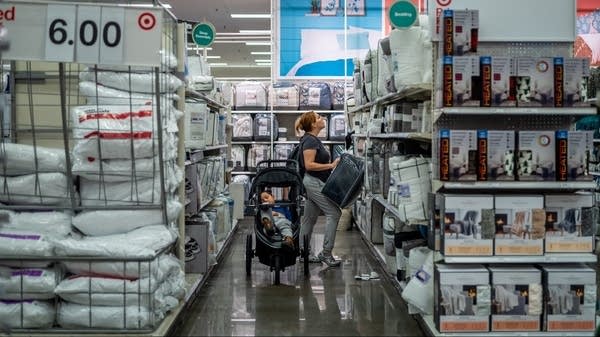Corporate profits are up 10% over the same quarter last year
Here’s a look at why American companies are making more money, and how they’re spending it.

Gross domestic product grew at a 3.2% annual rate in the third quarter, according to the Commerce Department. That’s higher than the Commerce Department previously estimated.
This revised GDP report also includes a tally of corporate profits. And over the last year, profits have been booming. Last quarter, American companies took home about 10% more than they did the same time a year ago.
Corporate profits are up in large part because prices are up. Even companies that are selling fewer products are seeing higher profits, said George Pearkes, macro strategist at Bespoke Investment Group.
“They’re able to push so much pricing power that it more than makes up for the decline in volumes,” he said. “And revenues are up at a really healthy pace because of that.”
Prices are higher because companies are passing along higher costs and people are willing to pay higher prices. Household balance sheets — for the most part, Pearkes said — are still in good shape.
“And combined with strong wage growth and strong employment growth, tight labor markets, you’re in a situation where consumer demand has really held up much better than anyone really expected, including myself,” said Pearkes.
Strong demand and higher prices put more cash on corporate balance sheets.
A lot of companies have been using that cash to invest in equipment, according to Jennifer Lee, senior economist at BMO Capital Markets.
“Machinery that can do the job quickly, you know, more efficiently,” she said. “Especially now, when you’ve got a shortage of workers and a shortage of labor.”
But next year, profits could start getting squeezed.
Spending on services like restaurants and hotels is likely to be pretty resilient, said Shannon Seery, an economist at Wells Fargo. But spending on goods has been gradually slowing down.
“Essentially, as you see consumers start to pull back, that’s where we don’t think that businesses will be able to pass on as much of a price gain going forward,” she said.
Companies are also facing higher borrowing costs and an economy that’s pretty uncertain. Business investment will slow down if companies start anticipating a recession, Seery said.
“There’s less of a desire to make a large capital expenditure than there is in an environment where demand is booming and you know there’s going to be a decent return on that investment.”
And if profits start declining, Seery said we could start to see layoffs pick up too.




